The Ultimate Guide to Making Perfect Round Cakes: Recipes, Tips, and Techniques
Baking the perfect round cake is both an art and a science. Whether you’re a novice baker looking to create your first birthday cake or an experienced pastry enthusiast wanting to refine your skills, mastering the round cake is an essential milestone in your baking journey. In this comprehensive guide, we’ll explore everything you need to know about creating delicious, beautiful round cakes that will impress your family and friends on any occasion.
Essential Equipment for Creating the Perfect Round Cake Experience
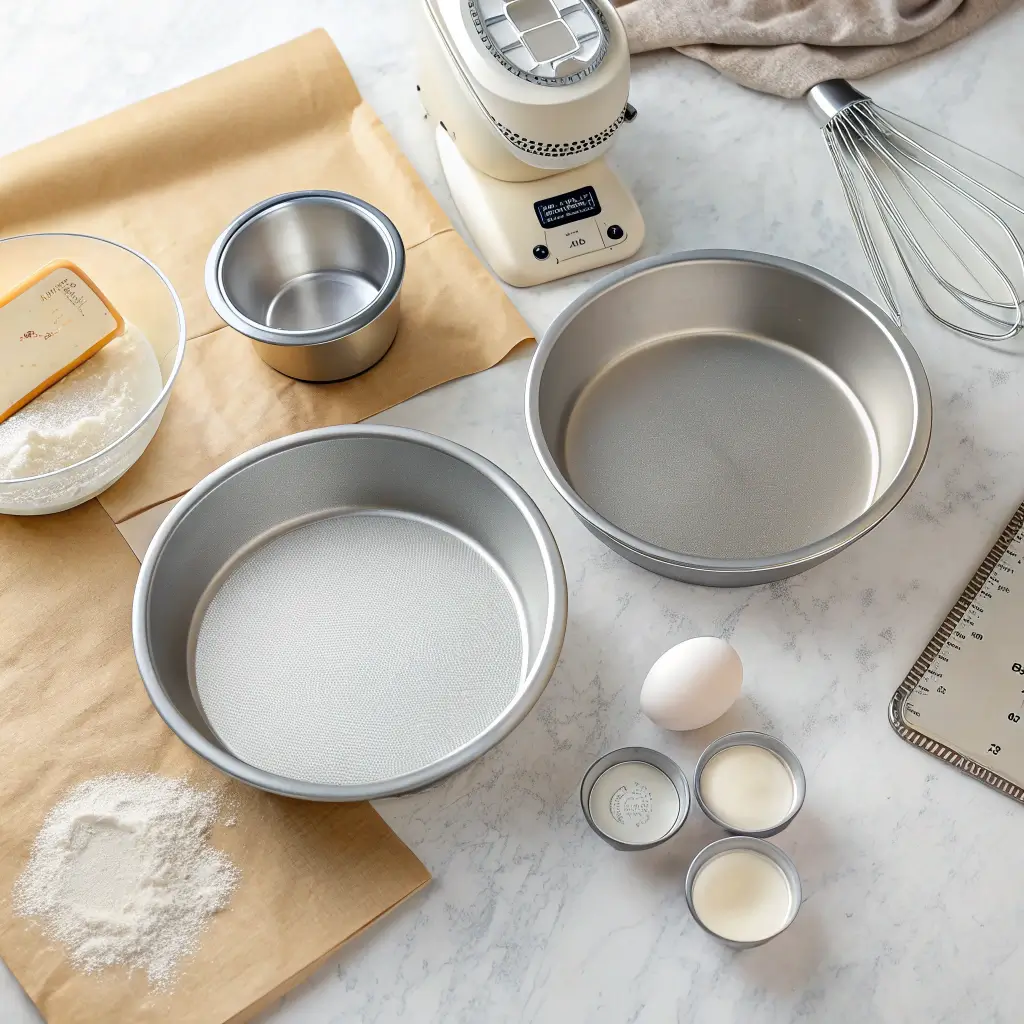
Before diving into recipes and techniques, let’s ensure you have the right tools for success. Having quality equipment makes a tremendous difference when baking a round cake. Furthermore, proper tools can transform your baking experience from stressful to enjoyable.
Round Cake Pans: The Foundation of Your Baking Success
The most crucial piece of equipment for making a round cake is, naturally, a high-quality round cake pan. Moreover, investing in good cake pans will save you frustration and disappointment in the long run. When selecting cake pans, consider the following:
- Size options: Common round cake pan sizes include 6-inch cake pans, 8-inch cake pans, and 9-inch cake pans. Additionally, having different sizes allows you to create variety in your cake designs.
- Material: Heavy-gauge aluminum conducts heat evenly, resulting in uniformly baked cakes. Furthermore, pans with a light color prevent excessive browning.
- Non-stick coating: A quality non-stick surface helps your cake release cleanly. However, even with non-stick pans, proper preparation is still important.
For home bakers serious about cake making, I recommend having at least two identical round cake pans. This allows you to bake multiple layers simultaneously when creating a layer cake. Additionally, having matching pans ensures uniform baking and consistent results.
Beyond the Basic Pan: Essential Tools for Round Cake Perfection
While you can certainly make a round cake with just a pan, these additional tools will elevate your baking experience:
- Parchment paper: Using parchment paper rounds at the bottom of the pan creates an ultra non-stick environment for your cake. Additionally, you can purchase pre-cut parchment rounds or trace and cut your own.
- Cake stand: A rotating cake stand makes frosting a round cake much easier. Furthermore, it doubles as an elegant display for your finished creation.
- Offset spatula: Perfect for spreading frosting smoothly on the sides of the cake and creating professional-looking finishes.
- Cooling racks: Proper cooling is crucial for cake texture and preventing condensation. Additionally, cooling racks allow air circulation around the entire cake.
Mastering the Basic Round Cake Recipe: A Foundation for Creative Baking
Every great baker needs a reliable round cake recipe in their arsenal. This versatile base can be adapted for countless variations, making it perfect for everything from a simple afternoon treat to an elaborate wedding cake. Additionally, mastering this foundation will give you the confidence to experiment with more complex cake recipes.
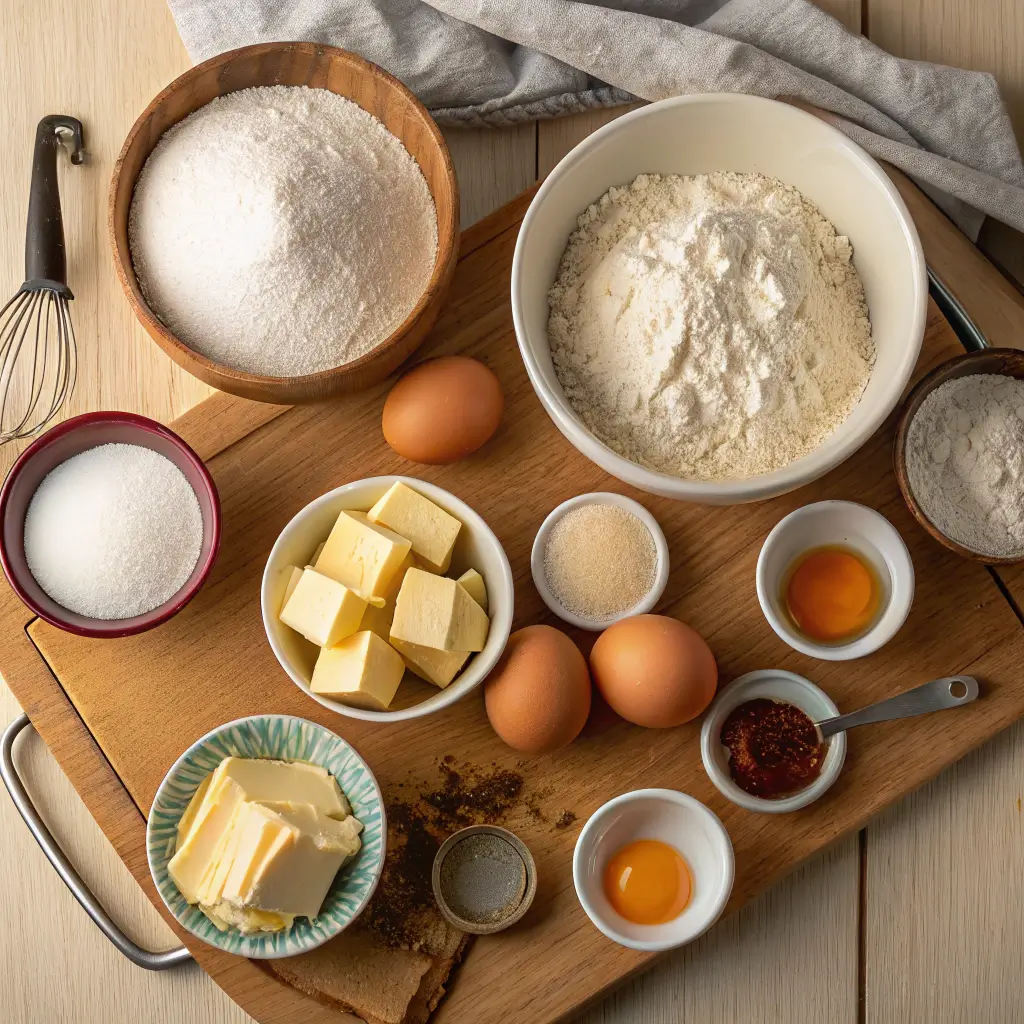
The Perfect Round Cake Recipe That Will Never Fail You
Ingredients:
- 2¼ cups all-purpose flour (or cake flour for a lighter texture)
- 1½ cups granulated sugar
- 3½ teaspoons baking powder
- 1 teaspoon salt
- 1¼ cups milk, room temperature
- ⅔ cup unsalted butter, softened
- 1 tablespoon vanilla extract
- 3 large eggs, room temperature
Step-by-Step Preparation for Foolproof Round Cake Success
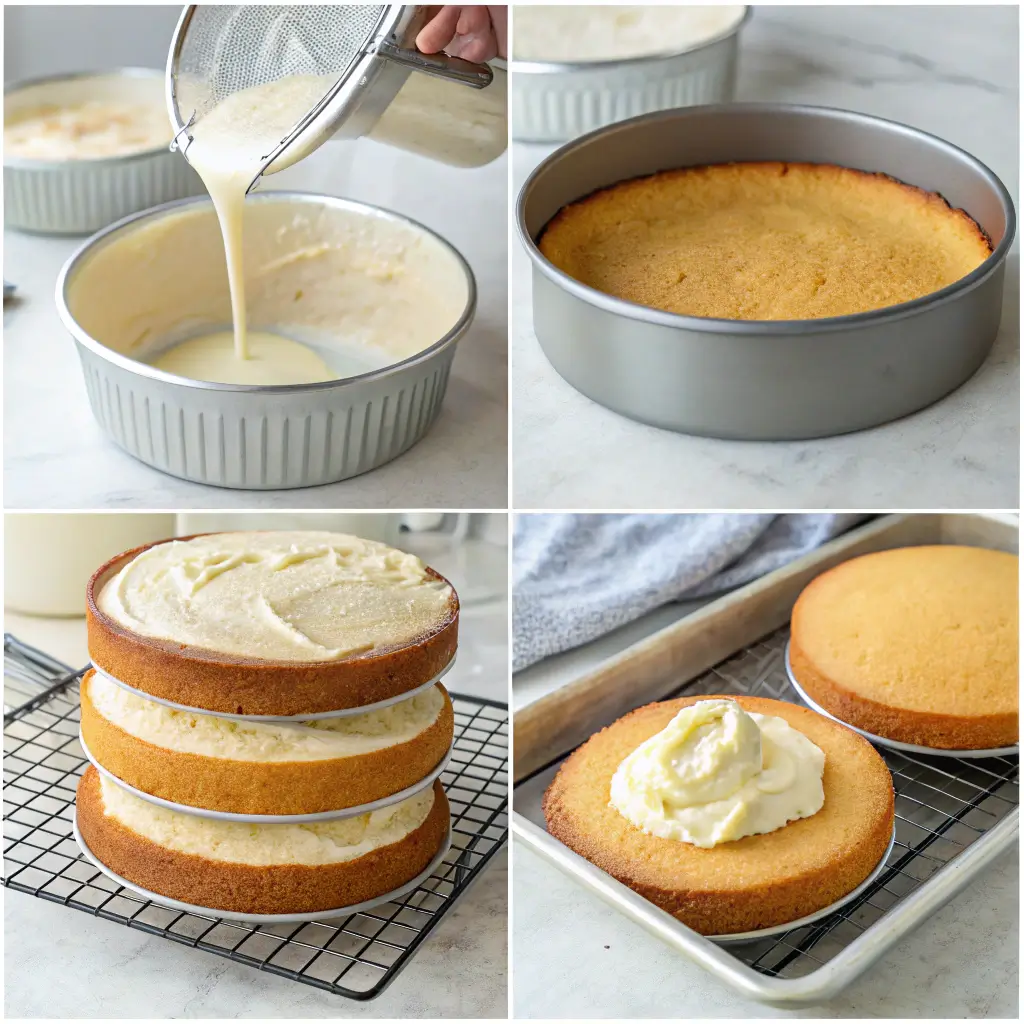
- Prepare your equipment: Preheat your oven to 350°F (175°C). Grease the pan with butter or cooking spray, then line the bottom with a parchment paper round. Additionally, you can lightly grease the parchment for extra insurance against sticking.
- Mix dry ingredients: In a large bowl, whisk together the flour, sugar, baking powder, and salt. This ensures even distribution of leavening agents throughout the cake batter.
- Beat the butter and wet ingredients: In a separate bowl, beat the butter until creamy. Gradually add milk and vanilla, mixing until combined. However, don’t worry if the mixture looks slightly curdled.
- Combine wet and dry mixtures: Gradually add the dry ingredients to the wet ingredients, mixing on low speed just until combined. Additionally, avoid overmixing, which can develop gluten and result in a tough cake.
- Add eggs: Add eggs one at a time, mixing well after each addition. Furthermore, scrape down the sides of the bowl to ensure everything is evenly incorporated.
- Bake to perfection: Pour the batter into your prepared round cake pan. For a layer cake, divide the batter between two pans. Bake for 25-30 minutes for 9-inch pans, or until a toothpick inserted into the center comes out clean.
- Cool properly: Allow the cake to cool in the pan for 10 minutes before inverting onto a cooling rack. Furthermore, peel off the parchment paper once the cake is turned out.
Expanding Your Round Cake Repertoire: Delicious Flavor Variations
Once you’ve mastered the basic round cake recipe, it’s time to explore different flavors. Additionally, these variations use the same fundamental techniques while introducing new taste experiences.
Decadent Chocolate Round Cake That Will Satisfy Any Craving
Transform your basic recipe into a rich chocolate cake by replacing ¼ cup of flour with cocoa powder and adding an extra egg for richness. Additionally, a splash of hot coffee can intensify the chocolate flavor without adding coffee taste.
The resulting chocolate cake pairs beautifully with whipped chocolate ganache or a classic buttercream. Moreover, chocolate cake makes an excellent base for a birthday cake or special celebration.
Vibrant Red Velvet Cake for Special Occasions
Red velvet cake combines the subtle flavors of cocoa with a distinctive color. To create this classic:
- Add 2-3 tablespoons of cocoa powder to the dry ingredients
- Include 1-2 tablespoons of red food coloring to the wet ingredients
- Add 1 tablespoon of vinegar to enhance the color and activate the baking soda
A red velvet cake traditionally pairs with cream cheese frosting for that perfect tangy contrast. Furthermore, this striking cake makes an unforgettable impression at any gathering.
Light and Refreshing Vanilla Cake That Pairs with Any Frosting
For a pure vanilla cake, use clear vanilla extract and add the seeds from one vanilla bean to the batter. Additionally, consider swapping some of the all-purpose flour for cake flour to create an even lighter texture.
Vanilla cake serves as a versatile base for nearly any frosting or filling. Moreover, its subtle flavor makes it perfect for highlighting seasonal fruits or bold frostings.
Spiced Carrot Cake for Fall and Winter Celebrations
Carrot cake brings warmth and complexity to the round cake format. To your base recipe, add:
- 2 cups grated carrots
- 1 teaspoon each of cinnamon, nutmeg, and ginger
- ½ cup each of chopped nuts and raisins (optional)
This carrot cake becomes extraordinarily moist and flavorful. Furthermore, it pairs perfectly with traditional cream cheese frosting for a timeless combination.
Transform your basic recipe into a rich chocolate cake by replacing ¼ cup of flour with cocoa powder. For a special birthday celebration, consider trying our Heart Cake for Birthday: Vintage Chocolate-Heart-Shape that combines this rich flavor with a charming presentation.
Advanced Techniques for Round Cake Perfection
As you become more comfortable with basic round cake recipes, you might want to explore more advanced techniques. These methods can elevate your cakes from good to truly exceptional.
Creating the Perfect Layer Cake Using Round Cake Pans
Layer cakes create a stunning visual impact and allow for interesting flavor combinations. For successful layer cakes:
- Even batter distribution: Use a kitchen scale to divide the batter equally between pans.
- Level layers: After baking, trim the top of each cake layer using a serrated knife to create flat surfaces for stacking.
- Crumb coat: Apply a thin layer of frosting all over the stacked cake and chill before the final frosting. This traps crumbs and creates a smooth final finish.
When making layer cakes, ensure each layer is completely cooled before stacking to prevent the frosting from melting. Additionally, inserting dowels or straws can provide support for taller cakes.
Common round cake pan sizes include 6-inch, 8-inch, and 9-inch. Additionally, having different shapes like our heart-shaped pan used in our vintage cake recipe allows you to create variety in your cake designs.
Adapting Recipes for Different Round Cake Pan Sizes
Recipe adjustments are often necessary when changing pan sizes:
- Scaling quantities: When moving from a 9-inch to a 6-inch cake pan, reduce ingredients by approximately half.
- Baking time adjustments: Smaller pans require less baking time, while larger ones need more. However, always use the toothpick test rather than relying solely on timing.
- Pan depth considerations: Deep pans may require lower oven temperatures to ensure the center bakes before the edges burn.
Understanding these principles allows you to adapt almost any recipe to the pan size you have available. Furthermore, mastering these adjustments gives you tremendous flexibility in your baking.
Specialty Round Cakes for Dietary Needs and Preferences
Baking should be inclusive, allowing everyone to enjoy a delicious slice of cake regardless of dietary restrictions. These adaptations maintain the essence of a perfect round cake while accommodating different needs.
Gluten-Free Round Cake That Tastes Better Than the Original
Create a gluten-free round cake by substituting the all-purpose flour with a high-quality gluten-free flour blend. Additionally, add ½ teaspoon of xanthan gum if your blend doesn’t already include it.
For best results, let the batter rest for 30 minutes before baking to allow the flours to hydrate properly. Moreover, gluten-free cakes often benefit from extra moisture, so consider adding an additional egg or a few tablespoons of sour cream.
Vegan Round Cake Options for Plant-Based Celebrations
Transform the basic recipe by:
- Replacing eggs with flax eggs (1 tablespoon ground flaxseed mixed with 3 tablespoons water per egg)
- Substituting butter with vegan butter or coconut oil
- Using plant-based milk instead of dairy milk
Vegan cakes can be just as delicious as traditional ones. Furthermore, they’re perfect for accommodating guests with various dietary preferences at your gatherings.
Decorating Your Round Cake: From Simple to Spectacular
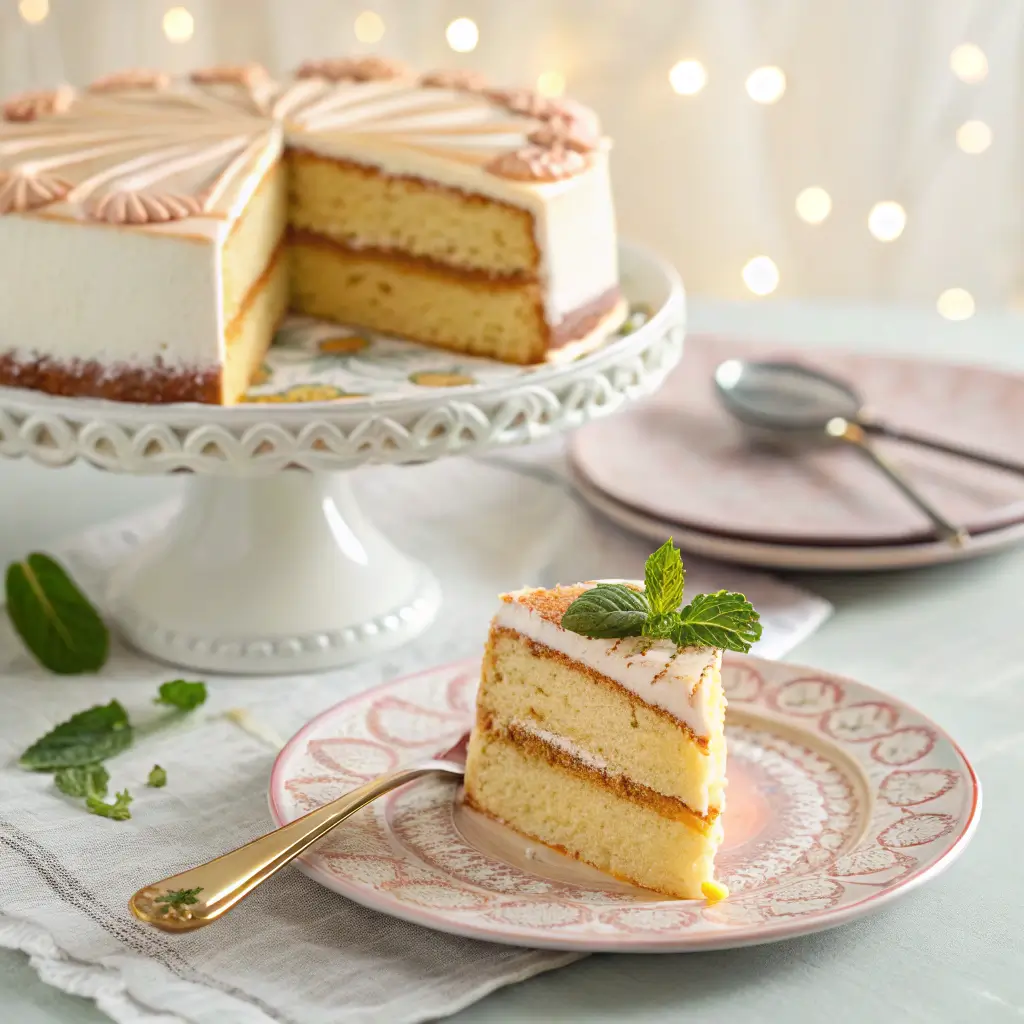
A beautifully decorated round cake becomes the centerpiece of any celebration. Whether you prefer minimalist elegance or elaborate designs, these techniques will help you create a stunning presentation.
Essential Frosting Techniques for Professional-Looking Results
The key to professional-looking frostings is patience and proper tools:
- Smooth sides: Use a bench scraper held at a slight angle while rotating the cake on a cake stand.
- Decorative edges: Practice basic piping techniques using different tips to create borders and accents.
- Texture options: Create rustic textures using an offset spatula, or smooth perfection with a hot spatula technique.
For beginners, a simple crumb coat followed by a final layer of frosting creates a clean canvas. Additionally, refrigerating the cake between layers of frosting helps achieve sharper edges.
Customization Options That Make Every Round Cake Special
Personalize your round cake with:
- Seasonal fruit arrangements
- Edible flowers
- Chocolate decorations
- Custom cake toppers
- Hand-piped messages or designs
These finishing touches transform a basic round cake into a custom creation. Moreover, they allow you to tailor the cake perfectly to the specific occasion or recipient’s preferences.
Troubleshooting Common Round Cake Problems
Even experienced bakers encounter challenges. Here are solutions to common issues when making round cakes.
Why Your Cake Isn’t Rising: Solutions and Prevention
If your round cake isn’t rising properly, consider these potential causes:
- Expired leavening agents: Baking powder and baking soda lose potency over time.
- Improper mixing: Overmixing can develop too much gluten, while undermixing can leave leavening agents unevenly distributed.
- Oven temperature issues: An oven thermometer can verify your oven is reaching the correct temperature.
Testing your baking powder by putting a small amount in hot water (it should bubble vigorously) can prevent flat cakes. Additionally, ensuring your ingredients are at room temperature promotes proper batter formation.
Preventing Sticking and Crumbling When Removing Cake from the Pan
Nothing is more frustrating than a cake that sticks to the pan. Prevent this by:
- Proper preparation: Always grease the pan and line the bottom with parchment paper.
- Cooling time: Allow the cake to cool in the pan for 10 minutes before attempting to remove it.
- Release technique: Run a knife around the edges before inverting the pan onto a cooling rack.
If you still encounter sticking, placing the pan bottom on a hot, damp towel for a minute can help release the cake. Furthermore, never try to remove a cake from the pan while it’s still hot, as this almost guarantees breaking.
Special Occasion Round Cakes That Will Impress Everyone
Round cakes are perfect for celebrations of all kinds. These variations are designed to make your special events even more memorable.
Birthday Cake Creations That Will Make Anyone Feel Special
Create memorable birthday cakes by:
- Adding colorful sprinkles to the batter for a funfetti effect
- Incorporating the birthday person’s favorite flavors or candy
- Creating themed decorations that reflect their interests
- Adding a surprise filling in the center
A thoughtfully made birthday cake shows care and consideration. Moreover, the round shape provides the perfect canvas for candles and decorative messages.
Wedding Cake Options Using Traditional Round Cake Techniques
While wedding cakes are often elaborate multi-tiered creations, the techniques for each tier remain similar to making a single round cake. Consider:
- Sturdier cake recipes that can support multiple layers
- Dowel supports between tiers for stability
- Simple, elegant decorations that complement the wedding theme
Even small wedding cakes made from a single 6-inch cake can be stunning with the right decorative touches. Additionally, a small cake can be supplemented with cupcakes or sheet cakes for larger gatherings.
For professional frosting techniques, visit Wilton’s cake decorating guide
Storing and Serving Your Round Cake for Maximum Freshness
Proper storage ensures your cake remains fresh and delicious. These guidelines will help maintain quality whether you’re serving immediately or saving for later.
Best Practices for Keeping Your Cake Fresh and Delicious
To maintain optimal freshness:
- Unfrosted cakes can be wrapped tightly in plastic wrap and stored at room temperature for 1-2 days
- Frosted cakes should be stored in a cake keeper or under a cake dome
- For longer storage, most cakes freeze well for up to 3 months when properly wrapped
When storing a frosted cake in the refrigerator, chill it unwrapped for 15 minutes first to set the frosting. Furthermore, allow refrigerated cake to come to room temperature before serving for the best flavor and texture.
Serving Suggestions That Enhance the Cake Experience
Elevate the serving experience with:
- Complementary sauces or coulis
- Fresh fruit garnishes
- Whipped cream or ice cream accompaniments
- Appropriate serving temperatures based on cake type
The right serving technique and accompaniments can transform even a simple round cake into a memorable dessert experience. Additionally, consider the occasion and preferences of your guests when planning your presentation.
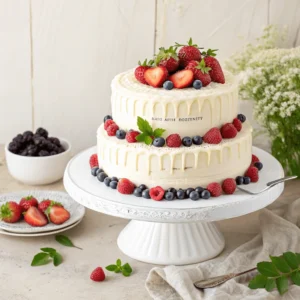
Perfect Basic Round Cake
Equipment
- Cake Pans: 2 × 9-inch Round Cake Pans ensures even layers
- Parchment Paper For lining cake pans
- Mixing Bowls: 1 large, 1 medium for dry ingredients and for wet ingredients
- Electric Mixe hand or stand for creaming and mixing
- Offset Spatula For spreading and smoothing frosting
- Cooling Rack For proper cooling
- Cake Stand Optional, useful for decorating
Ingredients
Cake Batter
- 2¼ cups All-purpose flour or cake flour for a lighter texture
- 1½ cups Granulated sugar
- 3½ teaspoons Baking powder
- 1 teaspoon Salt
- 1¼ cups Milk room temperature
- ⅔ cup Unsalted butter softened
- 1 tablespoon Vanilla extract
- 3 large Eggs room temperature
Basic Buttercream
- 1 cup Unsalted butter softened
- 4 cups Powdered sugar sifted
- 2 teaspoons Vanilla extract
- 2 –3 tablespoons Milk or heavy cream
Instructions
Prepare Pans:
- Preheat the oven to 350°F (175°C). Grease two 9-inch round cake pans with butter or cooking spray, then line the bottoms with parchment paper rounds.

Mix Dry Ingredients:
- In a large bowl, whisk together the flour, sugar, baking powder, and salt until well combined.2¼ cups All-purpose flour, 1½ cups Granulated sugar, 3½ teaspoons Baking powder, 1 teaspoon Salt
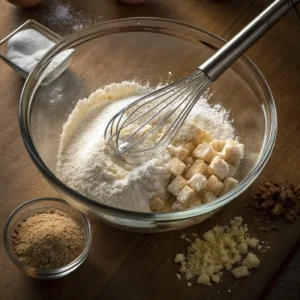
Cream Wet Ingredients:
- In a separate bowl, beat the butter until creamy. Gradually add the milk and vanilla extract, mixing until combined—even if the mixture appears slightly curdled.1¼ cups Milk, ⅔ cup Unsalted butter, 1 tablespoon Vanilla extract
Combine Mixtures:
- Gradually incorporate the dry ingredients into the wet ingredients on low speed. Mix just until combined to avoid overmixing, which can lead to a tough cake.
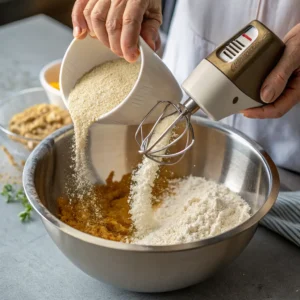
Incorporate Eggs:
- Add eggs one at a time, mixing well after each addition. Scrape down the bowl sides to ensure even incorporation.3 large Eggs
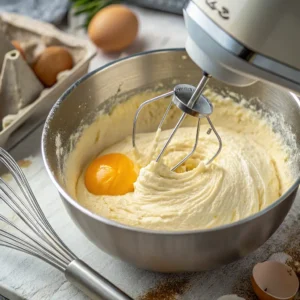
Fill Pans:
- Divide the batter evenly between the two prepared pans. A kitchen scale can help for precise measurement.
Bake:
- Bake for 25–30 minutes, or until a toothpick inserted into the center comes out clean.

Cool:
- Let the cakes cool in their pans for 10 minutes. Then, invert onto cooling racks and peel off the parchment paper.

Prepare Buttercream:
- In a large bowl, beat the softened butter until fluffy. Gradually add powdered sugar, vanilla, and milk, beating until the frosting is smooth and spreadable.1 cup Unsalted butter, 4 cups Powdered sugar, 2 teaspoons Vanilla extract, 2 –3 tablespoons Milk
Prepare Buttercream:
- Once the cakes are completely cooled, spread a layer of buttercream on top of one cake layer. Place the second layer on top.
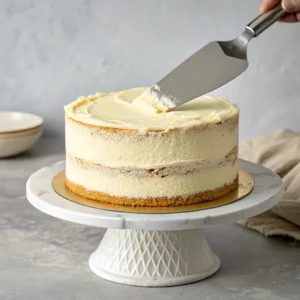
Decorate:
- Cover the entire cake with the remaining buttercream. Use an offset spatula to create smooth sides and a professional finish.

Notes
- Chocolate Variation: Replace ¼ cup of flour with cocoa powder and add an extra egg.
- Vanilla Bean Version: Add seeds from one vanilla bean to the batter.
- Storage: • Unfrosted cake can be stored at room temperature for 1–2 days or frozen for up to 3 months.
- • For refrigerated cake, allow it to come to room temperature before serving.
- Texture Tip: For a lighter texture, substitute cake flour for all-purpose flour.
FAQs: Everything You Need to Know About Round Cakes
What is a round cake called?
A round cake is simply called a “round cake” or “layer cake” when it consists of multiple stacked layers. However, certain round cakes have specific names based on their ingredients or preparation methods, such as pound cake, bundt cake (though these have a hole in the center), or specific regional varieties.
What is the cake circle called?
The circular piece of cardboard or sturdy material placed under a cake for support is called a “cake board” or “cake circle.” Additionally, the round liner used at the bottom of the pan is called a parchment round or parchment circle.
Does Costco sell round cakes?
Yes, Costco sells round cakes, including their popular 10-inch round cakes. However, selection varies by location and season, so it’s advisable to call ahead if you’re looking for a specific type of round cake.
What are the 7 types of cake?
While there are many ways to categorize cakes, seven common types include:
- Butter cakes (including pound cake)
- Sponge cakes (light and airy)
- Chiffon cakes (combining elements of both butter and sponge cakes)
- Genoise (Italian sponge cake)
- Biscuit cakes (containing no fat)
- Angel food cakes (very light, made with whipped egg whites)
- Carrot cakes and other vegetable-based cakes
What are small round cakes called?
Small round cakes are often called “petit fours” if they’re very small and iced, “cupcakes” if baked in individual cups, or simply “mini cakes” or “small round cakes” if they’re smaller versions of standard cakes. Furthermore, individual-sized round cakes are sometimes called “single-serving cakes.”
Learn more about the differences between cake flour and all-purpose flour and when to use each one.”
Did you love this recipe? Rate it and share your experience!
There are no reviews yet. Be the first one to write one.

